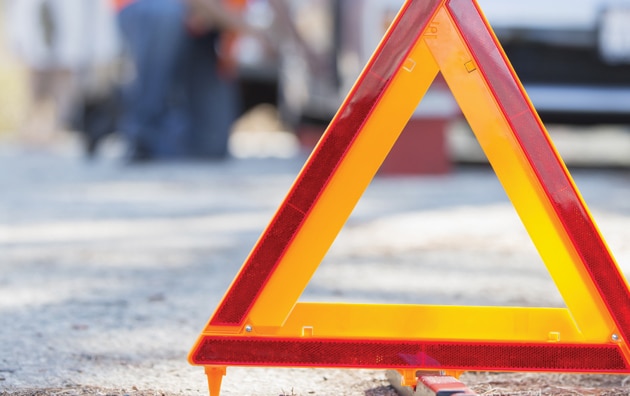What to Do in Case of a Truck Accident


Are your drivers prepared for an accident with a company truck? Having a plan in place can help keep drivers safe and prepared to capture important information at the accident scene. An accident response plan can also help your company investigate the root cause of the accident so you can create policies to prevent similar accidents in the future.
“Many times after an accident, drivers can become unsettled and may lose focus,” said Roger Whitworth, a transportation professional at Travelers Risk Control. “Provide simple, step-by-step instructions and a 24-hour first point of contact list, and make sure those contacts recognize the importance of remaining calm and non-judgmental when hearing about an accident.”
The first points of contact at your company can review the circumstances of the accident and help the driver determine next steps.
A Step-by-Step Checklist
Reviewing the steps with drivers as part of the vehicle safety program can help them know what to do in case of an accident. No matter how minor the accident seems, it’s important to stop and assess any injuries or damage.
- Stop, no matter how minor you think the accident might have been.
- Turn on your hazard lights.
- If you can safely do so, move out of the way of traffic.
- Check other drivers and passengers for injuries.
- Call 911 to report the accident.
- Set up emergency warning devices, such as warning triangles.
- Contact your insurance company once you have dealt with the immediate needs on site.
- Exchange information with the other driver(s).
- Discussions about who is at fault are not productive at the scene of the accident.
Preparing the Truck in Advance
Having the right supplies in your vehicle and having an easy-to-read checklist can help drivers know how to respond. These supplies can include:
- A 24-hour first point of contact list at your company.
- An accident report form with pen or pencil.
- Warning triangles and a fire extinguisher.
Collecting Information at the Scene
If possible, a driver should collect information at the scene to help with the investigation. Seemingly minor accidents may be more serious than they initially appear, so it’s important to capture contact information for others involved in the accident and any potential witnesses.
- Names, addresses and contact info for all witnesses and victims, including insurance policy information.
- Description of other vehicles (make, model, and license/VIN numbers).
- Information about injuries or property damage.
- Information about responding police officers, tow truck and ambulance services.
- Accident description, including time and location.
- Road, weather and lighting conditions.
Photographing and Videotaping the Scene
If it is safe to do so, a driver can also take photos or record a video of the scene. In addition to photos of the damage itself, images of the roadway, traffic signals, signs and approach to the accident area can help tell the story of the accident. Photos could also provide information on potential witnesses or things that might have contributed to the accident, such as a malfunctioning traffic light or overgrown hedges that might have obstructed the driver’s view.
Photo/video the scene:
- Both mid-range and close-up shots from all angles.
- Vehicle positions before they are moved.
- Approach and surroundings.
- Signals and signage.
- Skid marks and debris.
- License plates – can help identify owners later.
Finding the Root Cause
Going beyond the superficial cause of an accident can help identify the root cause, such as faulty equipment or a driver error that may be addressed by training or other policies. Instead of stopping at “What happened?” after an accident, ask “Why did it happen?”
For example, if a driver says they got into an accident because they were hurrying, asking why might reveal that they were late for a delivery, which might then identify the need for re-evaluating delivery routes and timelines. Making changes based on lessons learned can help prevent similar accidents in the future.